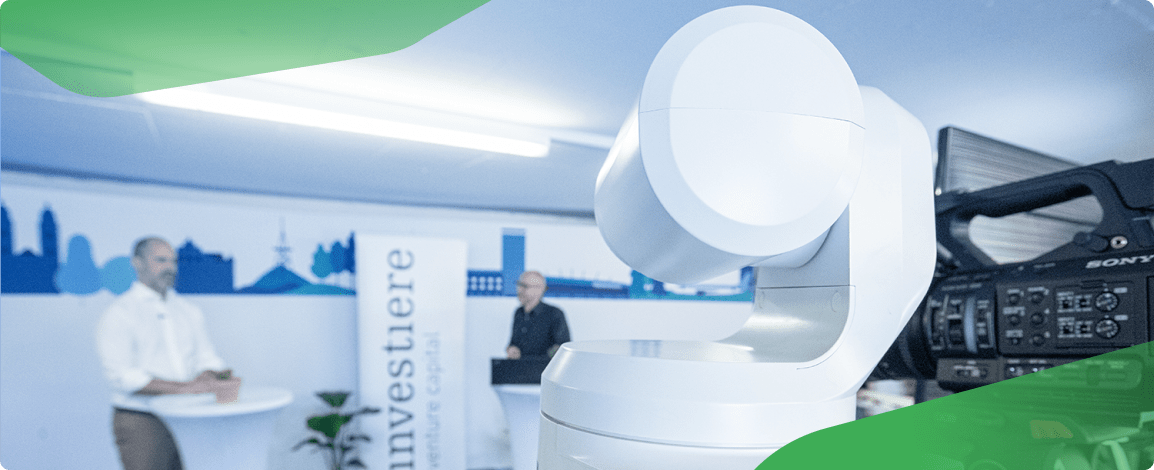
It's time to build a studio
As workplaces continue to progress into hybrid operations, creating high-quality live video productions is becoming more than just a good idea. With employees continuing to work remotely, corporations can no longer rely on in-person pitches, seminars and workshops to bring their workforce together. We all know how much we’d rather watch a marketing video than read an extensive pitch document. If you’re not already thinking about building your own in-house studio, it’s time to start. As you move towards producing your own content on a more regular basis, here’s a few tips for getting started on building a small studio.
Make the most of your space
Small studios with limited space need a set that makes the most of your available space and budget. Instead of focusing on a backdrop with a city view and company branding, a podium fit for a cathedral, and enough chairs for a UN panel discussion, keep it simple. The key is versatility, as you need a space that can be used in a range of situations without the need to rebuild the set. For a presenter, you will likely have enough space for a lectern or small table, and you can add a chair alongside for more casual shots. Add a simple plain backdrop and you’re covered for a lot more situations than you might think.
Simplify your equipment
The next step is realising that you don’t need a lot of fancy equipment to produce high-quality video content. First thing is obviously a camera, and in a lot of cases a PTZ is all you need to get started. We like the Panasonic AW UE100/150 here. Next up is a basic lighting set up and you can do a lot more here than you might think to make your videos look great. You just need one decent light source behind the camera, a secondary fill light to one side, and a soft backlight behind the speaker.
Last thing is a microphone, and small on-person microphones will serve you very well. The higher quality the better here, to make the chances of interruptions and interference as small as possible. Lights, camera and microphone can be pricey but believe us when we say that this is really where you need to not be afraid to spend money. Small studios are a great chance to build high quality videos on a budget, but there are still some places it’s worth spending the money.
Cut your production costs with Seervision
The reason we recommend a PTZ camera is simple: one of the biggest expenditures on corporate video is production crews. Every production will require a minimum of one operator and one technician, and if you don’t have anyone in-house that can do it, you’ll need to hire an external team every time. Even a modest schedule of three productions per month would cause your costs to skyrocket.
On the other hand, a Seervision solution for PTZ cameras allows you to automate the production process, with just one trained technician for up to three cameras. Our software is intuitive, straightforward to learn and use, and it is always ready to use. This means you can not only produce small productions simply, on your budget and timescale, but scale as you go. The Seervision Suite therefore removes the cost of an operator without compromising on production quality, perfect for a small studio.
Focus on your content
The real key to a small studio is making the most of what you have, and using it to create great content. Recognise that you don’t have the same kind of opportunities as a large studio, and instead of trying to replicate, embrace what you can do. Bring your panel discussions online, with your moderator present in person and your contributors joining from literally anywhere in the world. Use simple overlays to perform pitches internally and externally, without the need for an extra screen or a projector. Produce an interview series with your CEO and livestream directly to social media. The point is you really can do whatever you want. Once you start using your studio, you’ll wonder what took you so long to get started.

